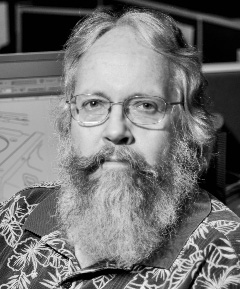The Briggs Water Tower – The Oldest House in CV?

president of the Historical Society
of the Crescenta Valley and loves local history. Reach him at
lawlerdad@yahoo.com.
I’m often asked, “What is the oldest house in the Valley?” The answer is complicated as the earliest house built in the valley is Theodor Pickens’ cabin, constructed on Briggs Terrace in 1871. But it was relocated intact to Henninger Flats up in the San Gabriel Mountains 50 years ago, and still exists there as a museum, accessible only by a long hike. The earliest structure in the valley after that would be the Briggs water tower, probably built around 1882-83, that exists as a home at the intersection of Freeman and Manzanita. It was not originally a home, though, not becoming a “real house” until 1948. So is it the earliest house? You decide – meanwhile here’s its story. I’m using as my source a building report done in 2010 by Tim Gregory. Tim does historical research on houses as a business. Check him out at www.buildingbiographer.com.
In 1881, Dr. Benjamin Briggs left his medical practice in Indiana for California, hoping to save his health and to establish a hospital. He bought out Pickens’ 120 acres on what is today Briggs Terrace at the top of Briggs Avenue. In 1882, he built a large home near today’s intersection of Freeman and Terrace Drive. The supposition is that very soon after that he built a servant’s quarters and water tower higher up the Terrace, reached by a horse path that later became Freeman Avenue.
Water towers both store water and create water pressure. The higher the water tank, the more the water pressure. This explains the water fountain we see in old photos in Briggs’ front yard, squirting water a good 15 feet in the air. That was a pretty cool trick before electricity! The tank on the tower would have been gravity filled by winter streams higher up the mountain, and later from the water tunnels that were dug into the mountain after the turn of the century.
In 1925, a new owner of the water tower and acreage around it enclosed the legs underneath the water tank and created a small stable for horses or mules. In 1927, the property was bought by Joseph Dabney, an oil magnate. Dabney is unremarkable in CV history, but did a lot for L.A. history. He was the money behind the old “Flying A” gas stations, gave the donation for Dabney Hall at CalTech, and was inadvertently responsible for an L.A. literary icon. Raymond Chandler worked for Dabney as a bookkeeper starting in 1922. In ’32, Dabney fired him for drinking and womanizing, which forced Chandler into writing. Raymond Chandler became a master of the detective novel, writing such greats as “The Big Sleep” and “Farewell My Lovely.”
After Dabney died in ‘32, the stables must have become living quarters, as a caretaker is recorded as living below the water tower in ’33. In ’48, the owners added 141 square feet attached to the enclosed legs (making it a “real house”) and later added a garage. They removed the steel liner from the water tank, and it’s assumed that at that point the tank itself became a room of the house. Current owners John and Roberta Code bought the place in 1962, and have happily lived in the tiny 785 sq. ft. house ever since.
The front door opens into the kitchen that is located beneath the legs of the tower. A small living room, bathroom and den are beyond that. The bedroom is in the former water tank above, reached by a narrow stairway. The incredibly cute little home overlooks the wilds of Goss Canyon.
You may have passed this house many times, never recognizing it as an enclosed water tower. Take a drive by now that you know its story, and you’ll instantly recognize its water tower shape. It’s probably the oldest structure – so arguably the oldest house in the Valley. But more important than that, it’s a tangible relic of one of the earliest water systems in Crescenta Valley, and the last remaining structure associated with Benjamin Briggs, the founder of La Crescenta.
